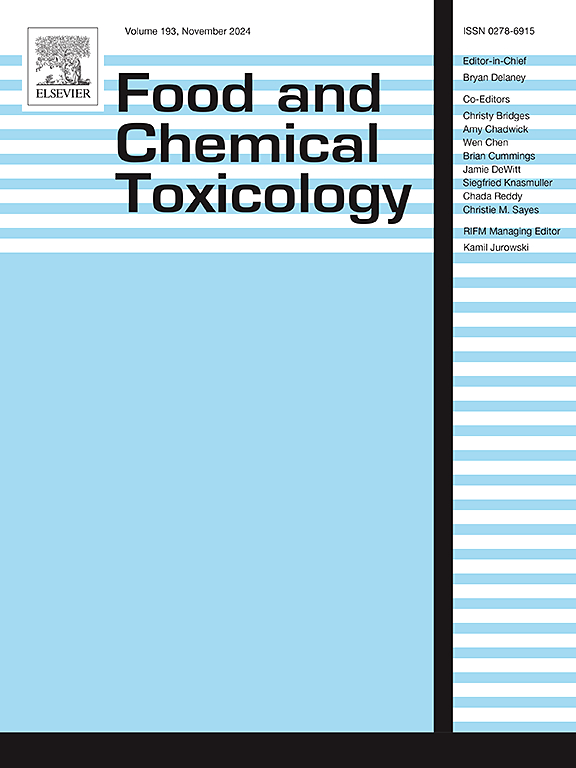Chemical characterization, antibacterial and antifungal activity of honey pots and pollen pots obtained from the stingless bee Tetragonisca angustula (Latreille, 1811)
IF 3.9
3区 医学
Q2 FOOD SCIENCE & TECHNOLOGY
引用次数: 0
Abstract
This study aimed to determine the chemical composition of the ethanolic extracts of honey pots (EEHPTa) and pollen pots (EEPPTa) from the stingless bee Tetragonisca angustula, as well as to evaluate their antimicrobial activity against Staphylococcus aureus, Pseudomonas aeruginosa, Escherichia coli, Candida albicans, and Candida tropicalis. The chemical composition was determined using HPLC-Q-TOF-MS/MS and HPLC-DAD, while antimicrobial assays were performed using the broth microdilution method. Eleven compounds were identified in EEHPTa and nine in EEPPTa, including cirsimaritin, 3ʹ-prenylnaringenin, xanthohumol, lespedezaflavanone B, and 19α-hydroxyursolic acid. The extracts enhanced the action of norfloxacin against S. aureus (MIC reduced from 256 to 128 μg/mL). With gentamicin, EEHPTa reduced the MIC from 17.95 to 11.31 μg/mL, while EEPPTa reduced it to 12.69 μg/mL. Only EEHPTa was effective with ampicillin, reducing the MIC from 71.83 to 31.7 μg/mL. Against P. aeruginosa, EEHPTa decreased the MIC of gentamicin from 8 to 4 μg/mL, whereas EEPPTa exhibited an antagonistic effect. For E. coli, only EEPPTa reduced the MIC from 64 to 57.01 μg/mL. EEHPTa exhibited lower IC50 values against yeast (C. albicans: 65.47 μg/mL; C. tropicalis: 29.79 μg/mL) compared to EEPPTa (C. albicans: 820.7 μg/mL; C. tropicalis: 809.9 μg/mL). Both extracts enhanced the effect of fluconazole against C. albicans but showed no effect on the C. tropicalis strain. These findings highlight the therapeutic potential of the secondary metabolites in these extracts, reinforcing their importance in the development of new antimicrobial and antifungal strategies.
求助全文
约1分钟内获得全文
求助全文
来源期刊

Food and Chemical Toxicology
工程技术-毒理学
CiteScore
10.90
自引率
4.70%
发文量
651
审稿时长
31 days
期刊介绍:
Food and Chemical Toxicology (FCT), an internationally renowned journal, that publishes original research articles and reviews on toxic effects, in animals and humans, of natural or synthetic chemicals occurring in the human environment with particular emphasis on food, drugs, and chemicals, including agricultural and industrial safety, and consumer product safety. Areas such as safety evaluation of novel foods and ingredients, biotechnologically-derived products, and nanomaterials are included in the scope of the journal. FCT also encourages submission of papers on inter-relationships between nutrition and toxicology and on in vitro techniques, particularly those fostering the 3 Rs.
The principal aim of the journal is to publish high impact, scholarly work and to serve as a multidisciplinary forum for research in toxicology. Papers submitted will be judged on the basis of scientific originality and contribution to the field, quality and subject matter. Studies should address at least one of the following:
-Adverse physiological/biochemical, or pathological changes induced by specific defined substances
-New techniques for assessing potential toxicity, including molecular biology
-Mechanisms underlying toxic phenomena
-Toxicological examinations of specific chemicals or consumer products, both those showing adverse effects and those demonstrating safety, that meet current standards of scientific acceptability.
Authors must clearly and briefly identify what novel toxic effect (s) or toxic mechanism (s) of the chemical are being reported and what their significance is in the abstract. Furthermore, sufficient doses should be included in order to provide information on NOAEL/LOAEL values.
 求助内容:
求助内容: 应助结果提醒方式:
应助结果提醒方式:


